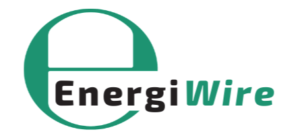Equinor Launches Gas Production at Halten East Project
Norwegian energy powerhouse Equinor has commenced production from the initial phase of its gas and condensate project located off Norway’s coastline. This initiative, designed to include multiple discoveries, is set to be developed in two distinct phases and aims to enhance gas supplies to the European energy market.
Production Begins After Regulatory Approval
Following the receipt of approval from Norwegian authorities two years ago, Equinor (holding a 69.5% stake and acting as the operator) has officially begun gas production at the Halten East project. This development, which is connected to the Kristin-Åsgard region in the Norwegian Sea, includes partnerships with Vår Energi (24.6%) and Petoro (5.9%). The project encompasses six gas discoveries, along with the capacity to explore three additional prospects, leveraging existing infrastructure and processing capabilities at the Åsgard B facility. Geir Tungesvik, Equinor’s Executive Vice President for Projects, Drilling, and Procurement, stated: “We are initiating Halten East at a time when Norwegian piped gas is crucial for energy security and in high demand. Despite a challenging cost and inflation landscape, the project has been delivered on schedule and within budget.” The operator anticipates a payback period of just one year for the venture.
Strategic Development and Future Prospects
In 2023, the company received the go-ahead for modification initiatives related to the Halten East and Smørbukk North developments, with the latter expected to start operations in December 2025 at Åsgard B. This semi-submersible platform is equipped with processing facilities for gas treatment as well as stabilization of oil and condensates. The Åsgard field, located in the central Norwegian Sea at depths ranging from 240 to 300 meters, was first discovered in 1981. The development strategy includes the Åsgard A production vessel, the Åsgard B platform, and the Åsgard C storage vessel. The field has been producing oil since May 1999 and gas since October 2000, and it also serves as a collection point for oil and gas from seven other fields integrated into the Åsgard B infrastructure. Gas extracted from the Åsgard field is transmitted through pipelines to Kårstø in Northern Rogaland County for further processing, where heavier hydrocarbons such as ethane, propane, and butane are separated, before the dry gas is transported via the Europipe II pipeline to continental customers.
Expansion Plans and Employment Opportunities
With the first well, Gamma, now operational and plans to activate additional wells this year to achieve full production by 2026, Equinor notes that the initial phase of the Halten East project includes six wells derived from five discoveries. The subsequent phase is already in planning stages, projected to begin operations in 2029, incorporating a sidetrack and up to three more potential wells on the Norwegian Continental Shelf (NCS). Equinor reports that approximately 90% of the project’s investments have been allocated to Norwegian suppliers, with the development phase expected to generate around 3,000 person-years of employment annually from 2022 to 2029. The total investment for both phases of the project is estimated at NOK 9 billion (around $850.46 million). With projected recoverable reserves estimated at 100 million barrels of oil equivalent, gas will be transported from Åsgard B to Kårstø for export to Europe via pipeline.
Collaboration and Future Endeavors
Kjetil Hove, Equinor’s Executive Vice President for Development and Production on the NCS, stressed: “Halten East exemplifies the significance of collaborative solutions among license holders and regulatory bodies to maximize the resource potential on the Norwegian continental shelf. Together, we can implement industrial strategies that ensure energy is delivered at low costs and with minimal emissions. We have an extensive portfolio of projects aimed at connecting discoveries to our production hubs. Equinor aims to bring over 30 such projects into operation within the NCS by 2035.”
Ownership Changes and Resource Estimates
After acquiring an 11.8% stake in the Halten East unit from Sval Energi in November 2024, Equinor boosted its ownership to 69.5%. The six discoveries within Halten East include Natalia, Sigrid, Nona, Flyndretind, Gamma, and Harepus, with gas to be processed through Åsgard B utilizing five subsea templates. The anticipated CO2 intensity is projected to be 3 kg per barrel of oil equivalent. Vår Energi, Equinor’s partner, regards the Halten East project as pivotal to achieving its production target of exceeding 400,000 barrels of oil equivalent per day (kboepd) by the fourth quarter of 2025.
Significance of Halten East for Vår Energi
Torger Rød, COO of Vår Energi, remarked: “Alongside Johan Castberg and Balder X, Halten East is one of the significant development projects initiating this year, pushing the Company’s production beyond 400 kboepd by Q4 2025. Vår Energi remains a dependable energy supplier to Europe, and the launch of Halten East will contribute substantial gas volumes with low emissions, generating significant value moving forward. This project exemplifies how high-value barrels can be swiftly and cost-effectively brought to market, with only two years from government approval to production and a payback period of one year.” The Norwegian Sea continues to serve as a valuable gas hub for Vår Energi, which currently holds approximately 430 million barrels of oil equivalent in reserves and resources. The company aims to pursue an additional 200 million barrels of oil equivalent through exploration initiatives in the coming four years.

